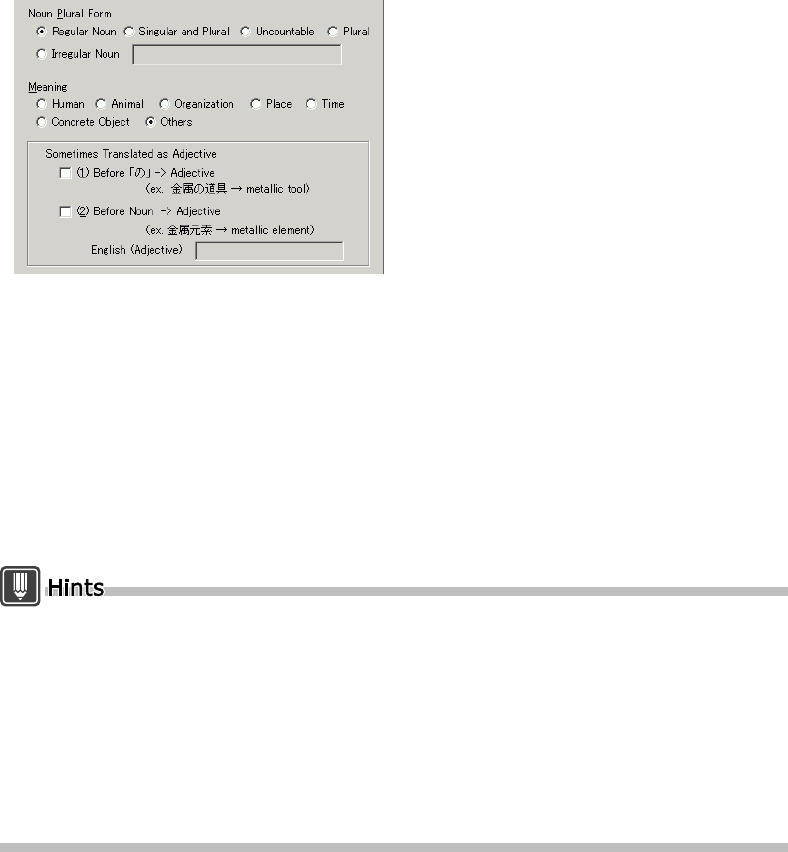
142
Basics
■ Settings for each part of speech in JE translation
This section describes the detailed settings for each part of speech when adding a Japanese
word and its English translation. For details, please refer to " ■ Reference for Adding Words"
on page 146."
●
Noun-Noun (JE)
● [Noun Plural Form]
Select the type of plural form of the translation (English). For an irregular noun, enter the
plural form in the [Irregular Noun] entry box.
● [Meaning]
Select the meaning of the noun to be added.
● [Sometimes Translated as Adjective]
If 「の」 is placed after a Japanese noun or a noun is placed before another noun, set whether
to translate it as an English adjective.
To translate it as an adjective, check the checkbox and enter the corresponding English
adjective in the [English (Adjective)] entry box.
The word entered here is called a "derived word."
Specify the English noun plural form by referring to the following examples.
• [Regular Noun]: The plural form is automatically judged.
• [Singular and Plural]: Select to set a noun that has the same form in both the singular and
the plural, such as sheep, deer, and salmon.
• [Uncountable]: Select to set an uncountable, such as news, information, and coffee.
• [Plural]: Select to set a noun such as people or police.
For a compound noun in which a word other than the last changes its form, specify it as an
[Irregular noun]
Ex. 帳簿 book of account → Irregular noun books of account


















